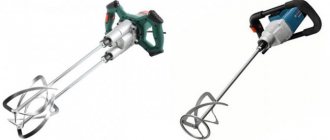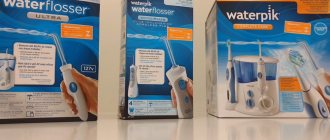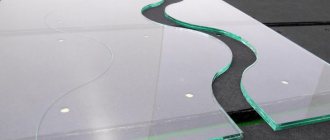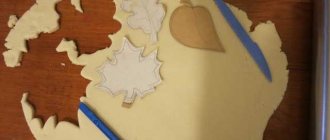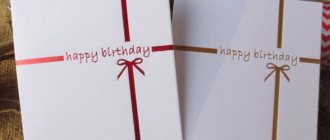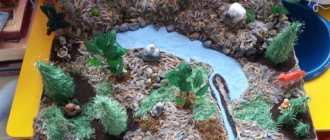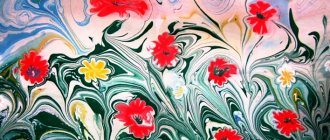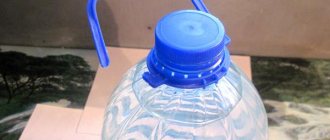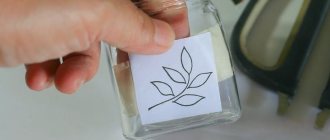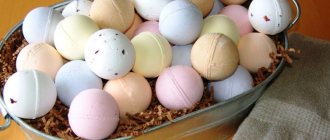How to prepare a solution of copper sulfate?
The most common solution in use is a one percent solution; to prepare it, take 100 grams of powder per ten liters of water.
The dry mixture is poured into a container and diluted with a small amount of warm water, 3-4 cups or 500 ml. The water temperature for better dissolution is approximately 45-50 degrees Celsius.
Dissolve slowly and let this mixture sit for 20-30 minutes. Heat the remaining water (9.5 liters) until hot, but not boiling, and mix with the prepared solution in a bucket. It is impossible to heat the solution during the preparation process, using any heating devices!
If you need a 2% solution, then take 2 times more vitriol for the same amount of water, that is, 200 grams per 10 liters of water. For a 3% solution - 300 grams, for 5% - 500 grams per bucket or 10 liters of water.
Useful tips
The rate of the crystallization process is directly affected by the saturation of the solution. After a couple of days, you can remove the crystal from the prepared solution and change the solution to a more saturated version.
Growing crystals is a fascinating process that allows the younger generation to develop a cognitive interest in natural science subjects.
If the process is too slow, you can expect to get one large crystal. At a high rate of crystallization, there will be many small crystals among the products.
Dosages
Based on the degree of concentration of copper sulfate in the solution, it is divided into three groups:
Feeding or fertilizing from 0.5% to 1%
Such a solution has a low concentration of the active substance and, as a rule, it is necessary as a source of copper for copper-depleted soil and feeding depleted seedlings in need of copper. In preparation, a measure of 50 to 100 grams of powder per 10 liters of water is maintained. To fertilize, water the soil in early spring and use 4 liters of solution per square meter.
Treatment and prophylaxis, 1-2%
This solution of copper sulfate is necessary where the first signs of fungi, mold, unpleasant pests or diseases have already appeared (anthracnose, scab, coccus mycosis, fruit rot, various types of spotting, curling, etc.). It is also good for treating wounds on tree bark.
Trees and shrubs are sprayed in the spring, in the phase of swollen, but not blossoming, buds. Also, when planting fruit seedlings, keep their roots in this solution for 3-5 minutes, then rinse with water. Wounds on tree bark are best treated in summer.
Burning 3-5%.
This is a very concentrated composition aimed at completely disinfecting the garden space. It is carried out in the fall where planting or construction of facilities is planned for the next year. Works great against mold.
After the burning process with copper sulfate, further use of the site for gardening and gardening is possible only after a year.
Any modern woman loves to change, regularly try on new images, and surprise with her uniqueness and beauty. But how to do this without resorting to a complete wardrobe overhaul or image change?
The solution is simple - just get a fashionable haircut that will emphasize your individuality and style and demonstrate your mood and character to others. Depending on fashion trends in haircuts, a woman can regularly try on new looks, which will allow her to always be different.
The best fashionable haircuts 2012
In 2012, stylists offer a lot of different haircuts for different hair lengths. The main trend is slight negligence, stylish dishevelment and torn ends. But in order for such fashionable haircuts of 2012 to look truly great, the hair must literally shine with health and beauty.
Fashionable haircuts 2012 for long hair
This year, ultra feminine style is at the peak of popularity. Therefore, haircuts for long hair won an undeniable victory. They are the ones who best emphasize the grace, elegance, sensuality and elegance of the fair sex.
Both straight haircuts and hair cut in a cascade have become trendy for long hair. The main decoration of such haircuts can be long thick bangs with slightly torn ends. But haircuts without bangs are no less relevant in 2012.
Fashionable haircuts 2012 for medium length hair
This year, bob-based haircuts in an ultra-modern interpretation are popular - graduated, straight or asymmetrical bobs, deliberate negligence, torn ends, lightness and weightlessness of shapes.
Long bob and sessun haircuts are also very popular. These haircuts have long won the love of millions of women, including many stars, and are unlikely to go out of fashion.
For those with straight hair, sleek medium-length haircuts with long bangs that softly frame the forehead are suitable. And girls with wavy hair should pay attention to retro-style haircuts.
Fashionable haircuts 2012 for short hair
In 2012, both voluminous haircuts with a “disheveled” effect and smooth haircuts are in fashion. The highlight of a short haircut can be asymmetry, elongated strands, original coloring or highlighting.
This season, the “boyish” haircut is especially popular, as it looks best with tousled, tousled strands. No less popular are haircuts based on a short bob, which has also acquired a slight “unkempt” effect due to torn strands, asymmetry, uneven partings, and bangs with uneven edges. However, this season's short bob can also be voluminous and sleek.
The main trend of 2012 was short haircuts with bangs. In this case, the bangs can be anything - thick, torn, smooth, oblique. In any case, this haircut will look stylish.
See
photo for this article
.
Source material:
- ona-znaet.ru - one hundred best haircuts of 2012, site “She Knows”.
Additional Information:
- dama.pp.ua - fashionable haircuts 2012 (photo), site "Women's Secrets";
- wordwoman.ru - haircuts 2012 (for short hair), website “Word to a Woman”;
- pocaz-mod.ru - fashionable short haircuts 2012 (40 photos), site "Pokaz mod".
Precautionary measures
Before you begin preparing the correct solution, you must carefully read the instructions. Copper sulfate is a strong chemical compound that, if handled improperly, can harm seedlings, and sometimes even your own health!
The protection measures are simple:
- Dilute only in a special non-metallic container and store in an inaccessible place.
- Prepare the solution for immediate use, and not for future use.
- Use the prepared mixture on the same day.
- You cannot dilute the solution near a water source, animal stalls, or in a crowded area.
- It is impossible to carry out this work in clear, dry weather (but not in heat above 30 degrees), even 4-5 hours before rain.
- Observe personal precautions: work with gloves, a hat, and a respirator.
- After finishing work, wash your hands, wash your face and rinse your mouth!
Next stage
While the solution is cooling, it is necessary to prepare a special “seed”. It can be copper sulfate itself. The formula of such a “seed” is similar to the chemical compound itself; the differences are only in the size of the crystal and its shape. It is fixed on a thread. Also, a button or bead will do an excellent job as a “seed”. It is placed inside a jar with a prepared supersaturated solution of copper sulfate. For the “seed” to fulfill its functional purpose, it must touch the bottom or walls of the vessel.
After the design is prepared, you need to be patient. How quickly will crystalline copper sulfate appear? The formula of this compound indicated above indicates that the composition contains copper cations and sulfate anions.
It has been experimentally established that crystals of this average salt form faster than those of table salt (sodium chloride).
When it becomes the desired size, it is removed from the solution and the thread is cut. To ensure that the finished crystal has an original appearance, it can be additionally coated with colorless varnish.
Housekeeper's Assistant
Copper sulfate, as a toxic chemical, perfectly fights mold and rot in rooms. Although, to be honest, from my experience, I would advise not to split hairs, but to buy a special anti-mold remedy, but if you are too bored with your life or too lazy to go to the store or for some other reason... in general, you can use copper sulfate.
First, wash the walls thoroughly and dry them.
Then prepare a solution of 20 grams of the substance per 1 liter of water, thoroughly treat the wall and let it dry so that a protective film forms on it. They say it helps too. I won't lie, I haven't used it.
Well, of course, find out the reasons for the appearance of mold - after all, it will be more effective to get rid of the causes than to get rid of the consequences.
Answers to frequently asked questions
Is it possible to treat plants with a 3 percent preparation?
No, 3% is too high a concentration. Reduce it to 0.5 - 1%.
How to prepare a working solution?
For 1 liter of water you need 30 grams of product. You need to use very warm, almost hot water so that the powder dissolves.
How else can you use a 3 percent mixture?
If wooden buildings are affected by fungus, you can treat them with the product.
Wood processing
The surface should be treated in 2-5 (two - five) layers. After all, the main goal pursued when processing wood is protection from rain, snow, ultraviolet radiation from the outside, from high humidity, mold, mildew, and various insects from the inside. So we start, as usual, by preparing the surface: we clean the wood from dust and dirt, and if necessary, sand it. And finally, we degrease, for example, with white spirit, moistening a dense lint-free cloth. We now turn to antiseptic compounds that can protect a wooden surface.
To do this, read the information below.
Tips for applying impregnation
Before starting work, it is advisable to more thoroughly prepare the surface on which the composition will be applied. Clean from dust and other contaminants and sand. Pre-treat existing cracks with white spirit and prime with alkyd primer.
Long-handled synthetic brushes or felt rollers are ideal for applying oil liquid. Excess must be removed with a soft, lint-free cloth. Repeat the manipulation in 1-2 steps.
Thick antiseptics are applied with a regular paint brush, sponge or soft rag, or a lint-free roller, while liquid ones are best applied with a spray gun.
When performing work on impregnating wood with an antiseptic outdoors, it is necessary to take into account external factors. It is better to choose dry, calm weather for applying the product.
Designate a special area for work. Prepare in advance all the tools, personal protective equipment and buy the missing items.
Internal wood impregnation work is permissible in well-ventilated areas.
When purchasing lumber, give preference to wood species that are most resistant to the destructive effects of external factors. These include: ash, pine, oak, Siberian larch
If desired, you can also use an old method to protect wood, which practically eliminates costs - roasting or boiling in a saline solution .
You can also impregnate wood using traditional methods - birch tar, flax oil, pine resin mixed with crushed coal and salt.
Growing crystals from different types of water
Next, we will conduct an experiment and observe the process of crystal growth from different types of water. Let's take for example:
- Tap water filtered through a household filter;
- Unfiltered tap water;
- Mineral water.
Crystal from filtered water
11 hours after preparing the solution, many small crystals of various shapes formed at the bottom of the jar. Having chosen the most suitable shape and size (0.5 cm), I continued growing.
Crystal Size Measurements:
- day 1 – 0.5 cm;
- day 2 – 2 cm (Figure 6);
- day 3 – 3 cm;
- day 4 – 4 cm (Figure 7);
- day 7 – 5 cm;
- day 10 – 6 cm (Figure 8);
- day 12 – the size remained the same, but the crystal grew significantly in width and became much more massive (Figure 9);
- day 17 – 6.5 cm, the crystal is still growing in width;
- day 21 – 8 cm.
| Figure 6. Second day of cultivation | Figure 7. Fourth day of cultivation | |
| Figure 8. Tenth day of cultivation | Figure 9. Twelfth day of cultivation | |
Tap water crystal
Unlike the first experiment, I was unable to grow a crystal from tap water the first time. Instead of seed crystals, a slurry formed at the bottom of the jar.
The second time, I covered the vessel with the crystal with a thick dark cloth and put it in an unlit place.
The next morning, at the bottom of the jar there were large, beautiful seed crystals of regular shape. Moreover, much larger than from filtered water (Figure 10).
| Figure 10. Seed with tap water. |
Crystal Size Measurements:
- day 1 – 1 cm;
- day 2 – 1.8 cm (Figure 11);
- day 5 – 2.3 cm;
- day 8 – 3.5 cm (Figure 12);
- day 10 – 4 cm;
- day 15 – 5.5 cm.
| Figure 11. Second day of cultivation. | Figure 12. Eighth day of cultivation. |
Mineral water crystal
I was never able to grow a crystal from mineral water, despite many attempts.
There were no crystals or slurry formed at the bottom of the jar; it turned out to be just slurry (Figure 13). After I tried to do the same as with a crystal from tap water and hold it all longer, nothing changed.
Figure 13. Sludge from small crystals on mineral water
When, after a week, absolutely nothing had changed, I made a new supersaturated solution in a 1:1 ratio of mineral and filtered water. Overnight, small irregular formations formed in the slurry (Figure 14). You can’t call them crystals, since they fall apart in your hands in the very first seconds, so it’s impossible to hang even one of them on a fishing line.
Figure 14. Sugar from small crystals in mineral water, diluted 1:1
Then I made a new supersaturated solution in a ratio of mineral and filtered water 1:3, and then 1:6 (Figure 15). As a result, the result was a mush of small crystalline formations. From which it was also impossible to select a single normal seed crystal.
Figure 15. Sugar from small crystals in mineral water, diluted 1:6
For cultivation, NARZAN mineral water was taken (Figure 16).
Figure 16. Label with the composition of mineral water
Based on the composition of the water and the examples given, it can be assumed that mineral ions and carbon dioxide (CO2) contained in mineral water interfere with the formation of the crystal lattice.
Beautiful transformations of glucose
You will need a pharmaceutical solution of pure glucose. We pour it onto the sediment obtained in the previous experiment and carefully heat it. The bright blue precipitate will gradually turn first into a yellow solution, then into a red one.
Everything needs to be done quite carefully and accurately, so look at how I did it.
Effect of different types of water on crystal growth
After I finished growing crystals from filtered and tap water, I decided to do a little experiment.
I mixed the supersaturated solution from filtered water and the supersaturated solution from tap water in a 1:1 ratio. After that, I poured an equal amount of the solution into two identical containers and immersed a crystal from filtered water in one of them, and a crystal from tap water in the other. After 14 hours, both crystals were completely dissolved.
Two weeks later, I repeated the experiment, growing one crystal each from tap and filtered water. The result was the same.
Conclusions and useful video on the topic
Recipe for preparing wood impregnation:
Detailed instructions for making impregnation for fire-bioprotection at home are in the following video:
Wood has always been in demand and people have invented various ways to protect it from pests and minimize the harmful effects of precipitation, high and low temperatures. You can use both purchased products and make your own using natural ingredients, most of which are available on the farm.
What antiseptic do you use? Share your recipe for the perfect impregnation, which is easy to prepare yourself - the comment form is located below. If you have questions about wood preservatives or application nuances, ask our experts and other site visitors.
Other areas of application
I'll tell you about them in general terms. These are: the chemical and food industries, as well as use as an emetic.
In chemistry, this substance is the “source” for many processes of inorganic synthesis. In particular, the process of producing acetate fiber is also not complete without copper sulfate.
As for the food additive, its number is E519. Due to its toxic properties, copper sulfate is used precisely as a preservative. Sometimes also as a color fixative, although lately it has become less and less common.
But as for an emetic, then, of course, there is nothing better than potassium permanganate. But if it so happens that you don’t have it at hand, but you do have vitriol, then you can use it, but very carefully and in very, very low concentrations.
I sincerely wish you never find yourself in such a situation that you have to use it!
